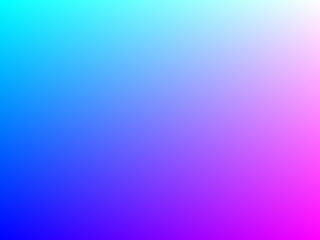Porting GLSL Sandbox effect to GStreamer glshader element
GStreamer has various filter elements, among which is OpenGL fragment shader filter “glshader”.
This filter accepts GLSL vertex source and shader, but you can specify only shader. For example:
gst-launch-1.0 videotestsrc ! glupload ! glshader fragment="\"`cat myshader.frag`\"" ! glimagesink
“Shader” can create real-time effect/demo “movie” like posted in GLSLSandbox and Shadertoy. So, I looked into how to stream “shader” into Gstreamer.
Input is required
An input is actually required for glshader.
glshader is an implement of GstBaseTransform, which shall have a sink pad.

If no input required to the filter, the a dummy input is required. I believe gltestsrc is good, because using OpenGL source is the most efficient way to stream it to the glshader element without conversion.
Shader parameter incompatibility between GStreamer and GLSLSandbox
glshader varying and uniform parameters:
varying vec2 v_texcoord;
uniform sampler2D tex;
uniform float time;
uniform float width;
uniform float height;
GLSLSandbox uniform parameters:
uniform float time;
uniform vec2 mouse;
uniform vec2 resolution;
uniform sampler2D backbuffer;
Here, it is impossible to port some uniforms such as mouse into glshader.
time can be ported in the same value.
resolution can be ported to vec2(width, height).
The output parameter gl_FragColor is same.
Gl_FragCoord can be used in the same way, but the coordinate systems are different.
The coordinate transformation is required to acquire the same output image. For example,
// For GLSLSandbox
#ifdef GL_ES
precision mediump float;
#endif
#extension GL_OES_standard_derivatives : enable
uniform float time;
uniform vec2 mouse;
uniform vec2 resolution;
void main( void ) {
vec2 uv = gl_FragCoord.xy / resolution;
gl_FragColor = vec4( uv.x, uv.y, 1.0, 1.0 );
}
// For GStreamer glshader
#version 100
#ifdef GL_ES
precision mediump float;
#endif
varying vec2 v_texcoord;
uniform sampler2D tex;
uniform float time;
uniform float width;
uniform float height;
void main() {
vec2 uv = vec2(gl_FragCoord.x, height - gl_FragCoord.y) / vec2(width, height);
gl_FragColor = vec4( uv.x, uv.y, 1.0, 1.0 );
}
Both yield same output as following:

Output sink
All that’s left is to connect some filters and sinks after the glshader in the usual GStreamer way.
For example, to show a window, connect glimagesink directly:
% gst-launch-1.0 gltestsrc pattern=black ! \
glshader fragment="\"$(cat myshader.frag)\"" ! \
glimagesink
To redirect a V4L2 device, conversion is required before connect to the device:
% gst-launch-1.0 gltestsrc pattern=black ! \
glshader fragment="\"$(cat myshader.frag)\"" ! \
gldownload ! \
videoconvert ! \
videoscale ! \
video/x-raw,width=640,height=480,framerate=30/1,format=YUY2 ! \
v4l2sink device=/dev/video1
To generate a PNG file…
% gst-launch-1.0 gltestsrc pattern=black num-buffers=1 ! \
glshader fragment="\"$(cat myshader.frag)\"" ! \
gldownload ! \
videoconvert ! \
pngenc ! \
filesink location=capture1.png
Reference
- glshader, GStreamer API Reference
- GstBaseTransform, GStreamer API Reference
- gltestsrc, GStreamer API Reference
- mrdoob/glsl-sandbox: Online live editor for fragment shaders.
- jolivain/gst-shadertoy: Scripts for using some ShaderToy shaders in GStreamer